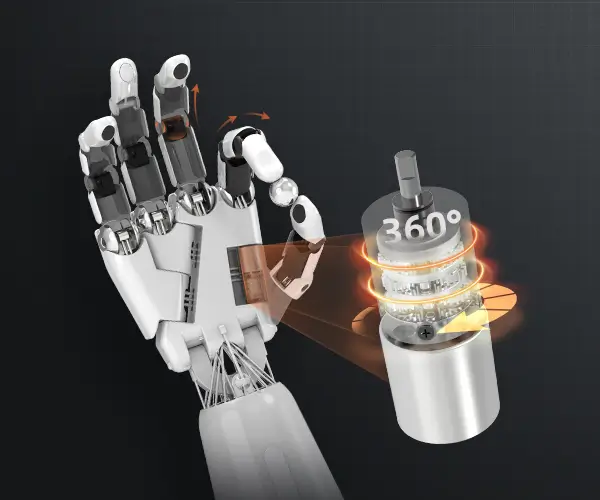Sure! Here's the first part of a soft, engaging article on "DC and Servo Motor," designed to captivate and inform. The second part will follow shortly.

part 1:
Imagine a world where machines move with perceptible precision—robots assembling tiny electronics, drones navigating complex paths, or conveyor belts sorting items at lightning speed. Behind all this seamless motion lies a marvel of engineering: the humble motor. Among the myriad types, two stand out for their versatility and importance—DC motors and servo motors. While they share basic principles, their applications, capabilities, and intricacies differ significantly, making understanding their nuances essential for engineers, hobbyists, and innovators alike.
The Heartbeat of Mechanical Motion: An Overview
DC motors, short for direct current motors, have long been the workhorses of industry and electronics. They operate on direct electrical power, converting direct current into rotational movement. Their design simplicity—comprising a stator, rotor (armature), brushes, and commutator—makes them reliable and relatively easy to control. DC motors excel in applications requiring straightforward rotation at controllable speeds, such as electric vehicles, toys, and small appliances.
In contrast, servo motors are specialized rotary actuators designed for precise position control. They’re like the conductor of an orchestra, managing not just movement but timing and accuracy—an essential trait in robotics, CNC machines, and aerospace applications. Unlike basic DC motors, servo motors are often integrated with feedback devices like encoders or resolvers, allowing them to know exactly where they are and adjust their movement accordingly.
The Fundamental Difference: Control and Feedback
The real distinction between DC motors and servo motors lies in control and feedback mechanisms. A typical DC motor, when supplied with power, spins at a speed roughly proportional to the voltage and load, but it doesn’t inherently offer precise position control unless additional components are added.
Servo motors, on the other hand, are equipped with a built-in control circuit and feedback system. This closed-loop control allows the motor to reach and maintain a specific position, speed, or torque with high accuracy. Think of a servo motor as an eager student who not only follows a command but also continuously checks and corrects their response to match the intended outcome perfectly.
This capability to perform closed-loop control opens up vast possibilities: industrial robots can replicate human-like dexterity, CNC machines can carve intricate designs with micron-level precision, and camera autofocus systems can swiftly adjust to focus on moving subjects—all thanks to the sophisticated control inside servo motors.
Diving Into the Construction
The construction of a DC motor is conceptually straightforward. Its stator provides a magnetic field, while the rotor (armature) carries windings connected to brushes and a commutator. When current flows, magnetic forces generate torque, causing the rotor to turn. The brushes and commutator work together to reverse the current in the windings, ensuring continuous rotation.
Servo motors, however, can take various forms, such as brushed, brushless, or coreless designs. The most common types are brushed and brushless DC servo motors. Brushed servo motors are similar in basic construction to regular DC motors but include a feedback sensor (usually an encoder). Brushless servo motors employ electronic commutation—eliminating brushes—and often feature permanent magnets on the rotor, providing higher efficiency and reduced maintenance.
Control Systems: From Simplicity to Sophistication
Controlling a basic DC motor can be as simple as adjusting the voltage supply. Variable resistors (potentiometers), PWM (pulse-width modulation), or simple driver circuits can regulate speed. Position control involves adding sensors, but achieving high precision typically becomes complex and less reliable.
Servo motors utilize sophisticated control algorithms—most notably PID (Proportional, Integral, Derivative) controllers—that process feedback signals and compute the necessary adjustments to the motor’s drive signals. The input to a servo system is often a target position or speed, and the feedback device measures the actual state, allowing the control system to minimize the difference continually.
Imagine a robotic arm that needs to move its joints to exact angles within milliseconds. Without the high-fidelity feedback loop provided by a servo, such precision remains a distant dream. That’s why servo motors are prevalent where accuracy reigns supreme.
Power and Performance: Choosing the Right Tool
When deciding between a DC motor and a servo motor, consider your application's specific needs. DC motors tend to be more straightforward, cost-effective, and suitable for applications where position accuracy isn’t critical—like powering a fan or a conveyor belt.
Servo motors shine where precise control, repeatability, and dynamic response are necessary. For instance, in robotic arms assembling delicate electronics, the motor must adjust grip strength and position repeatedly with exceptional fidelity. There, the servo’s feedback loop ensures smooth and accurate operation.
The power rating, torque, size, and control complexity all influence the choice. DC motors can handle high torque at low speeds but can struggle with precise position control without additional sensors and control systems. Conversely, servo motors integrate all necessary components, making them self-contained solutions for complex motion tasks.
Stay tuned for Part 2, where we’ll delve deeper into applications, upcoming innovations, and how the evolving landscape of motor technology continues to drive industry forward. We'll also look at real-world case studies and guide you through selecting the perfect motor for your project.
Established in 2005, Kpower has been dedicated to a professional compact motion unit manufacturer, headquartered in Dongguan, Guangdong Province, China.




































